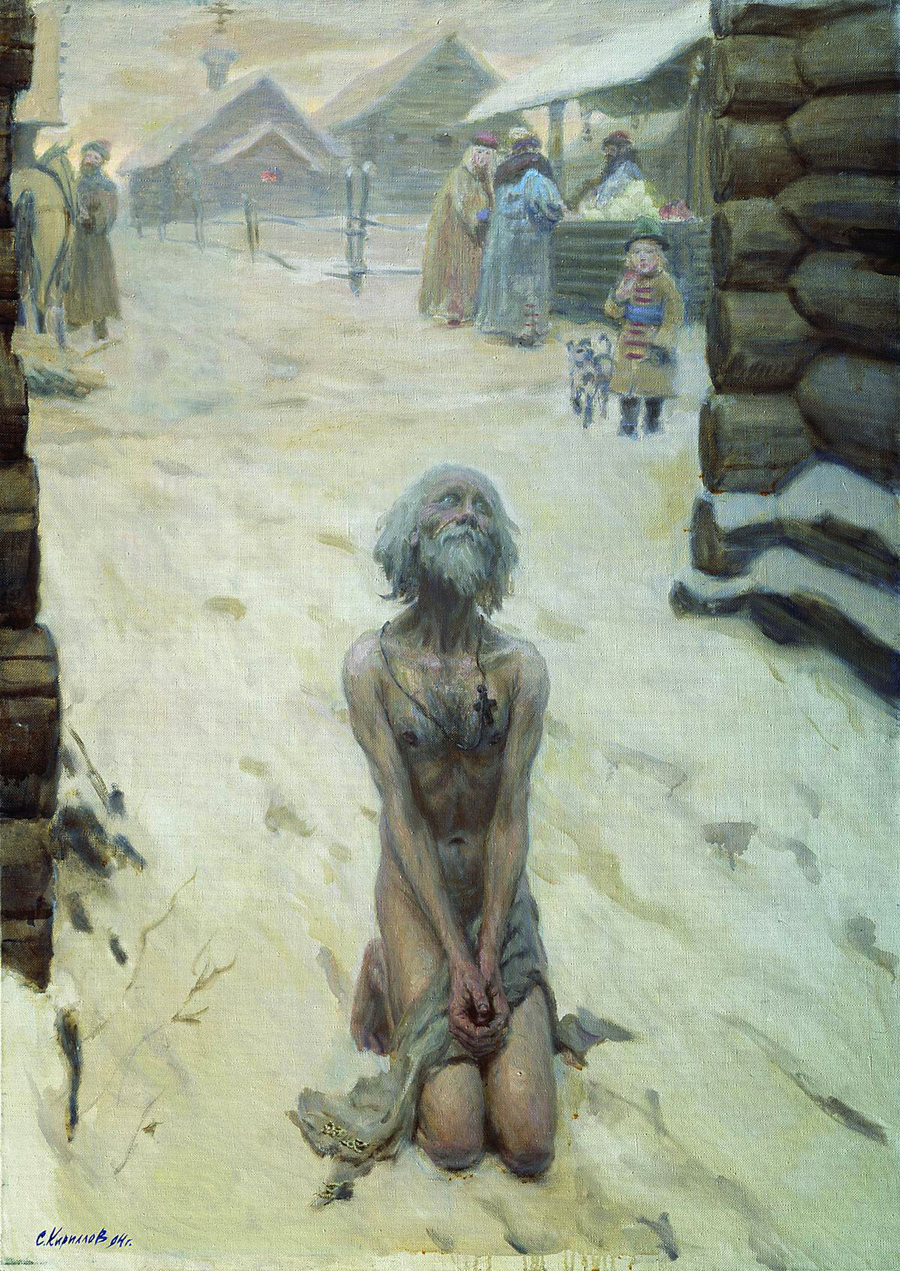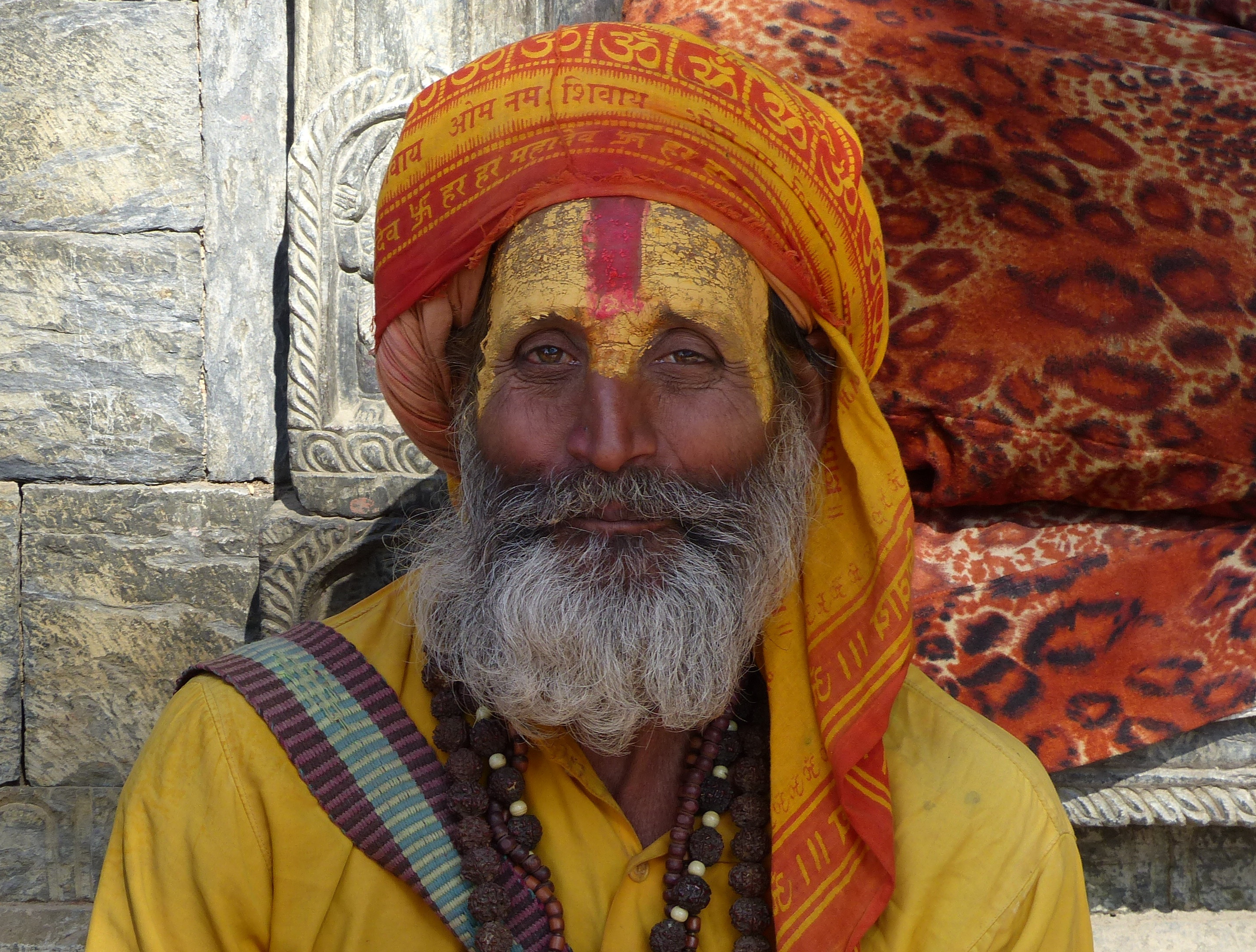|
Mendicant
A mendicant (from la, mendicans, "begging") is one who practices mendicancy, relying chiefly or exclusively on alms to survive. In principle, mendicant religious orders own little property, either individually or collectively, and in many instances members have taken a vow of poverty, in order that all their time and energy could be expended on practicing their respective faith, preaching and serving society. Mendicancy is a form of asceticism, especially in Western Christianity. In Eastern Christianity, some ascetics are referred to as Fools for Christ, whereby they spurn the convention of society in pursuit of living a more wholly Christian life. Religious practice Many religious orders adhere to a mendicant way of life, including the Catholic mendicant orders, Hindu ascetics, some Sufi dervishes of Islam, and the monastic orders of Jainism and Buddhism. While mendicants are the original type of monks in Buddhism and have a long history in Indian Hinduism and the co ... [...More Info...] [...Related Items...] OR: [Wikipedia] [Google] [Baidu] |
Jainism
Jainism ( ), also known as Jain Dharma, is an Indian religion. Jainism traces its spiritual ideas and history through the succession of twenty-four tirthankaras (supreme preachers of ''Dharma''), with the first in the current time cycle being Rishabhadeva, whom the tradition holds to have lived millions of years ago, the twenty-third ''tirthankara'' Parshvanatha, whom historians date to the 9th century BCE, and the twenty-fourth ''tirthankara'' Mahavira, around 600 BCE. Jainism is considered to be an eternal ''dharma'' with the ''tirthankaras'' guiding every time cycle of the cosmology. The three main pillars of Jainism are ''ahiṃsā'' (non-violence), ''anekāntavāda'' (non-absolutism), and ''aparigraha'' (asceticism). Jain monks, after positioning themselves in the sublime state of soul consciousness, take five main vows: ''ahiṃsā'' (non-violence), ''satya'' (truth), ''asteya'' (not stealing), ''brahmacharya'' (chastity), and ''aparigraha'' (non-possessiveness). These pr ... [...More Info...] [...Related Items...] OR: [Wikipedia] [Google] [Baidu] |
Dervishes
Dervish, Darvesh, or Darwīsh (from fa, درویش, ''Darvīsh'') in Islam can refer broadly to members of a Sufism, Sufi Tariqa, fraternity (''tariqah''), or more narrowly to a religious mendicant, who chose or accepted material poverty. The latter usage is found particularly in Persian and Turkish language, Turkish (''derviş'') as well as in Berber languages, Amazigh (''Aderwish''), corresponding to the Arabic term ''Fakir, faqīr''. Their focus is on the universal values of love and service, deserting the illusions of ego (''nafs'') to reach God in Islam, God. In most Sufi orders, a dervish is known to practice ''dhikr'' through physical exertions or religious practices to attain the ecstatic trance to reach God. Their most popular practice is Sama (Sufism), Sama, which is associated with the 13th-century mystic Rumi. In folklore and with adherents of Sufism, dervishes are often credited with the ability to perform miracles and ascribed supernatural powers. Historically, t ... [...More Info...] [...Related Items...] OR: [Wikipedia] [Google] [Baidu] |
Catholicism
The Catholic Church, also known as the Roman Catholic Church, is the largest Christian church, with 1.3 billion baptized Catholics worldwide . It is among the world's oldest and largest international institutions, and has played a prominent role in the history and development of Western civilization. O'Collins, p. v (preface). The church consists of 24 ''sui iuris'' churches, including the Latin Church and 23 Eastern Catholic Churches, which comprise almost 3,500 dioceses and eparchies located around the world. The pope, who is the bishop of Rome, is the chief pastor of the church. The bishopric of Rome, known as the Holy See, is the central governing authority of the church. The administrative body of the Holy See, the Roman Curia, has its principal offices in Vatican City, a small enclave of the Italian city of Rome, of which the pope is head of state. The core beliefs of Catholicism are found in the Nicene Creed. The Catholic Church teaches that it ... [...More Info...] [...Related Items...] OR: [Wikipedia] [Google] [Baidu] |
Fools For Christ
Foolishness for Christ ( el, διά Χριστόν σαλότητα, cu, оуродъ, юродъ) refers to behavior such as giving up all one's worldly possessions upon joining an ascetic order or religious life, or deliberately flouting society's conventions to serve a religious purpose—particularly of Christianity. Such individuals have historically been known as both "holy fools" and "blessed fools". The term "fool" connotes what is perceived as feeblemindedness, and "blessed" or "holy" refers to innocence in the eyes of God.Frith, Uta. (1989) Autism: The Elegant Enigma. Malden, MA: Blackwell Publishing. The term ''fools for Christ'' derives from the writings of Saint Paul. Desert Fathers and other saints acted the part of Holy Fools, as have the ''yurodivy'' (or iurodstvo) of Eastern Orthodox asceticism. Fools for Christ often employ shocking and unconventional behavior to challenge accepted norms, deliver prophecies, or to mask their piety.Parry (1999), p. 233 Old Te ... [...More Info...] [...Related Items...] OR: [Wikipedia] [Google] [Baidu] |
Monastic
Monasticism (from Ancient Greek , , from , , 'alone'), also referred to as monachism, or monkhood, is a religious way of life in which one renounces worldly pursuits to devote oneself fully to spiritual work. Monastic life plays an important role in many Christian churches, especially in the Catholic and Orthodox traditions as well as in other faiths such as Buddhism, Hinduism and Jainism. In other religions monasticism is criticized and not practiced, as in Islam and Zoroastrianism, or plays a marginal role, as in modern Judaism. Many monastics live in abbeys, convents, monasteries or priories to separate themselves from the secular world, unless they are in mendicant or missionary orders. Buddhism The Sangha or community of ordained Buddhist bhikkhus ("beggar" or "one who lives by alms".) and original bhikkhunis (nuns) was founded by Gautama Buddha during his lifetime over 2500 years ago. This communal monastic lifestyle grew out of the lifestyle of earlier sects of wandering ... [...More Info...] [...Related Items...] OR: [Wikipedia] [Google] [Baidu] |
Hindu Ascetic
''Sadhu'' ( sa, साधु, IAST: ' (male), ''sādhvī'' or ''sādhvīne'' (female)), also spelled ''saddhu'', is a religious ascetic, mendicant or any holy person in Hinduism, Buddhism, and Jainism who has renounced the worldly life. They are sometimes alternatively referred to as '' yogi'', ''sannyasi'' or ''vairagi''. Sadhu means one who practises a ' sadhana' or keenly follows a path of spiritual discipline.″Autobiography of an Yogi″, Yogananda, Paramhamsa, Jaico Publishing House, 127, Mahatma Gandhi Road, Bombay Fort Road, Bombay (Mumbai) - 400 0023 (ed.1997) p.16 Although the vast majority of sādhus are yogīs, not all yogīs are sādhus. A sādhu's life is solely dedicated to achieving mokṣa (liberation from the cycle of death and rebirth), the fourth and final aśrama (stage of life), through meditation and contemplation of Brahman. Sādhus often wear simple clothing, such as saffron-coloured clothing in Hinduism and white or nothing in Jainism, symbolis ... [...More Info...] [...Related Items...] OR: [Wikipedia] [Google] [Baidu] |
Saint Dominic
Saint Dominic ( es, Santo Domingo; 8 August 1170 – 6 August 1221), also known as Dominic de Guzmán (), was a Castilian Catholic priest, mystic, the founder of the Dominican Order and is the patron saint of astronomers and natural scientists. He is alternatively called Dominic of Osma, Dominic of Caleruega, and Domingo Félix de Guzmán. Life Birth and early life Dominic was born in Caleruega,"Saint Dominic", Lay Dominicans halfway between Osma and Aranda de Duero in Old Castile, |
The Way Of A Pilgrim
''The Way of a Pilgrim'', or ''The Pilgrim's Tale'', is the English title of a 19th-century Russian work, recounting the narrator's journey as a mendicant pilgrim while practicing the Jesus Prayer. The pilgrim's travels take him through southern and central Ukraine, Russia, and Siberia. It is unknown if the book is literally an account of a single pilgrim, or if it uses a fictional pilgrim's journey as a vehicle to teach the practice of ceaseless inner prayer and communion with God. The Russian original, or a copy of it, was present at a Mount Athos monastery in Greece in the 19th century, and was first published in Kazan in 1884, under the Russian title that translates as ''"Candid Narratives of a Pilgrim to His Spiritual Father."'' (russian: Откровенные рассказы странника духовному своему отцу)The Russian title of the book is "Откровенные рассказы странника духовному своему отцу" – lite ... [...More Info...] [...Related Items...] OR: [Wikipedia] [Google] [Baidu] |
Buddhism
Buddhism ( , ), also known as Buddha Dharma and Dharmavinaya (), is an Indian religion or philosophical tradition based on teachings attributed to the Buddha. It originated in northern India as a -movement in the 5th century BCE, and gradually spread throughout much of Asia via the Silk Road. It is the world's fourth-largest religion, with over 520 million followers (Buddhists) who comprise seven percent of the global population. The Buddha taught the Middle Way, a path of spiritual development that avoids both extreme asceticism and hedonism. It aims at liberation from clinging and craving to things which are impermanent (), incapable of satisfying ('), and without a lasting essence (), ending the cycle of death and rebirth (). A summary of this path is expressed in the Noble Eightfold Path, a training of the mind with observance of Buddhist ethics and meditation. Other widely observed practices include: monasticism; "taking refuge" in the Buddha, the , and the ... [...More Info...] [...Related Items...] OR: [Wikipedia] [Google] [Baidu] |
Benedictines
, image = Medalla San Benito.PNG , caption = Design on the obverse side of the Saint Benedict Medal , abbreviation = OSB , formation = , motto = (English: 'Pray and Work') , founder = Benedict of Nursia , founding_location = Subiaco Abbey , type = Catholic religious order , headquarters = Sant'Anselmo all'Aventino , num_members = 6,802 (3,419 priests) as of 2020 , leader_title = Abbot Primate , leader_name = Gregory Polan, OSB , main_organ = Benedictine Confederation , parent_organization = Catholic Church , website = The Benedictines, officially the Order of Saint Benedict ( la, Ordo Sancti Benedicti, abbreviated as OSB), are a monastic religious order of the Catholic Church following the Rule of Saint Benedict. They are also sometimes called the Black Monks, in reference to the colour of their religious habits. They w ... [...More Info...] [...Related Items...] OR: [Wikipedia] [Google] [Baidu] |
Asceticism
Asceticism (; from the el, ἄσκησις, áskesis, exercise', 'training) is a lifestyle characterized by abstinence from sensual pleasures, often for the purpose of pursuing spiritual goals. Ascetics may withdraw from the world for their practices or continue to be part of their society, but typically adopt a frugal lifestyle, characterised by the renunciation of material possessions and physical pleasures, and also spend time fasting while concentrating on the practice of religion or reflection upon spiritual matters. Various individuals have also attempted an ascetic lifestyle to free themselves from addictions, some of them particular to modern life, such as money, alcohol, tobacco, drugs, entertainment, sex, food, etc. Asceticism has been historically observed in many religious traditions, including Buddhism, Jainism, Hinduism, Islam, Christianity, Judaism, Stoicism and Pythagoreanism and contemporary practices continue amongst some religious followers. The pra ... [...More Info...] [...Related Items...] OR: [Wikipedia] [Google] [Baidu] |
Eastern Christianity
Eastern Christianity comprises Christian traditions and church families that originally developed during classical and late antiquity in Eastern Europe, Southeastern Europe, Asia Minor, the Caucasus, Northeast Africa, the Fertile Crescent and the Malabar coast of South Asia, and ephemerally parts of Persia, Central Asia, the Near East and the Far East. The term does not describe a single communion or religious denomination. Major Eastern Christian bodies include the Eastern Orthodox Church and the Oriental Orthodox Churches, along with those groups descended from the historic Church of the East, as well as the Eastern Catholic Churches (which have either re-established or always retained communion with Rome and maintain Eastern liturgies), and the Eastern Protestant churches (which are Protestant in theology but Eastern in cultural practice). The various Eastern churches do not normally refer to themselves as "Eastern", with the exception of the Assyrian Church of the ... [...More Info...] [...Related Items...] OR: [Wikipedia] [Google] [Baidu] |

_001.jpg)
.jpg)




